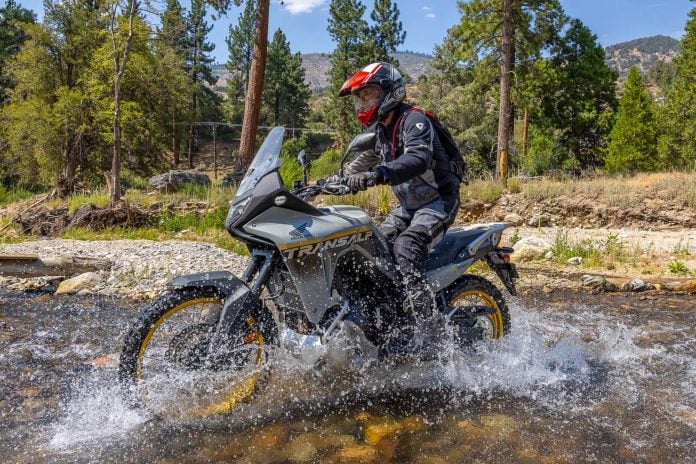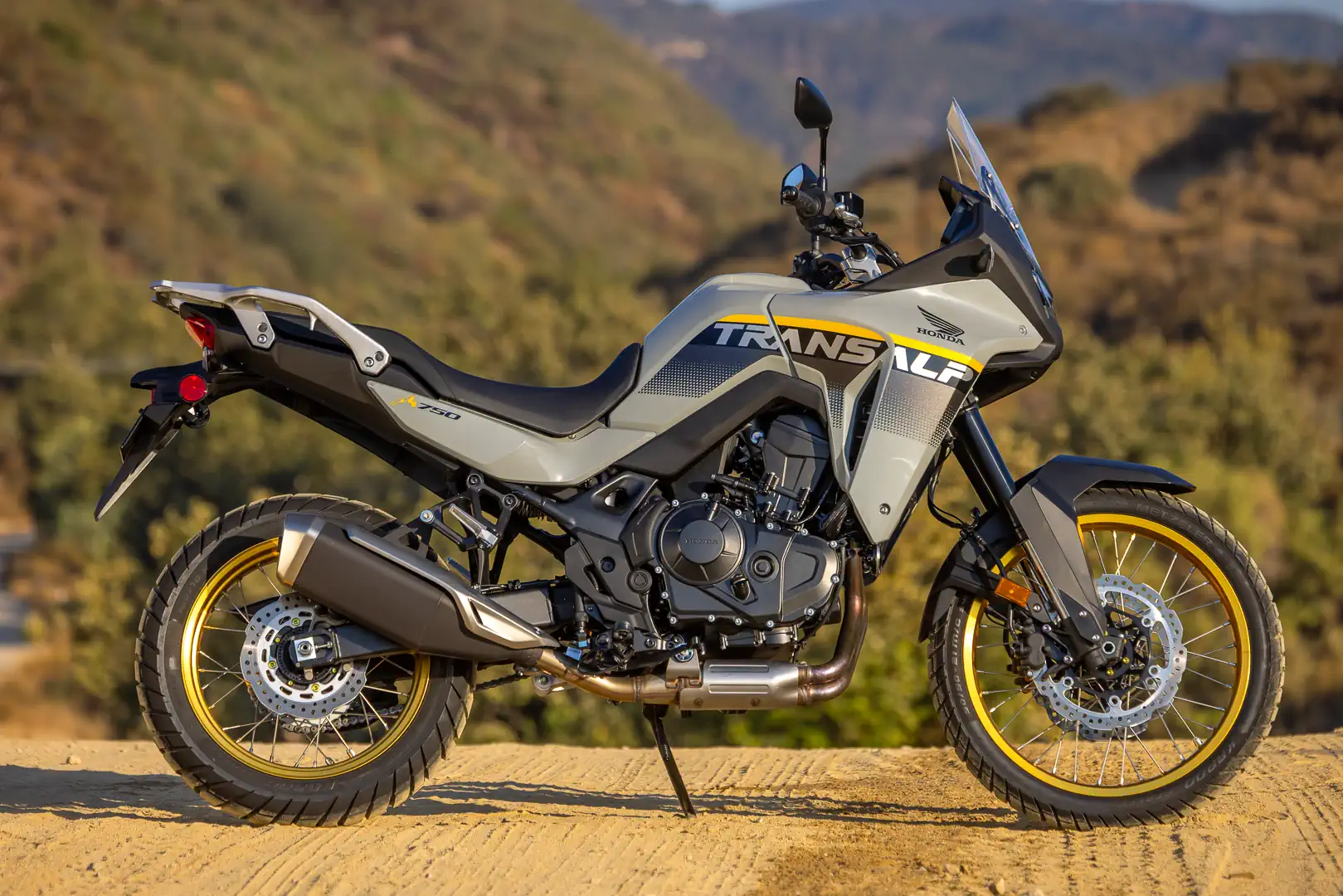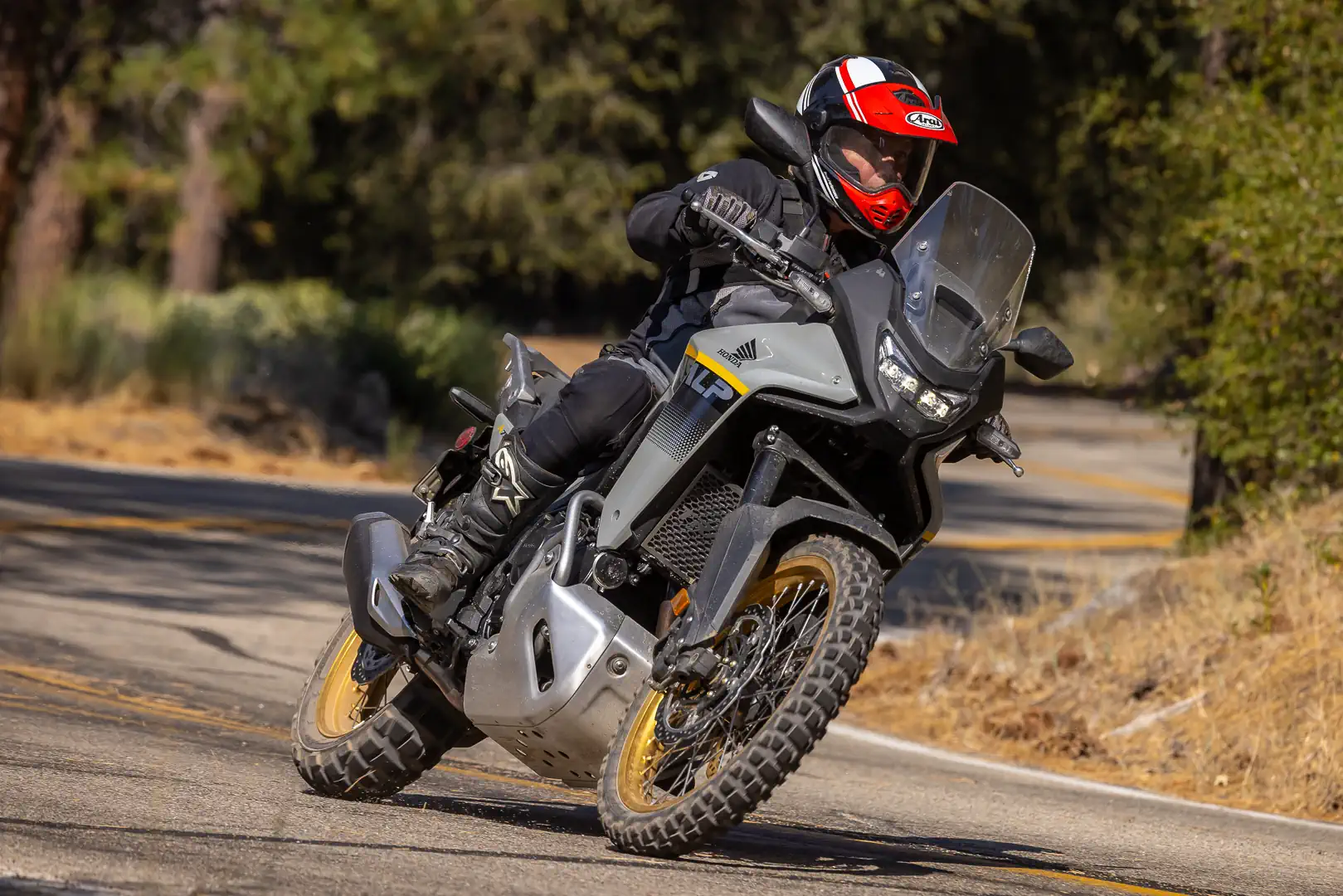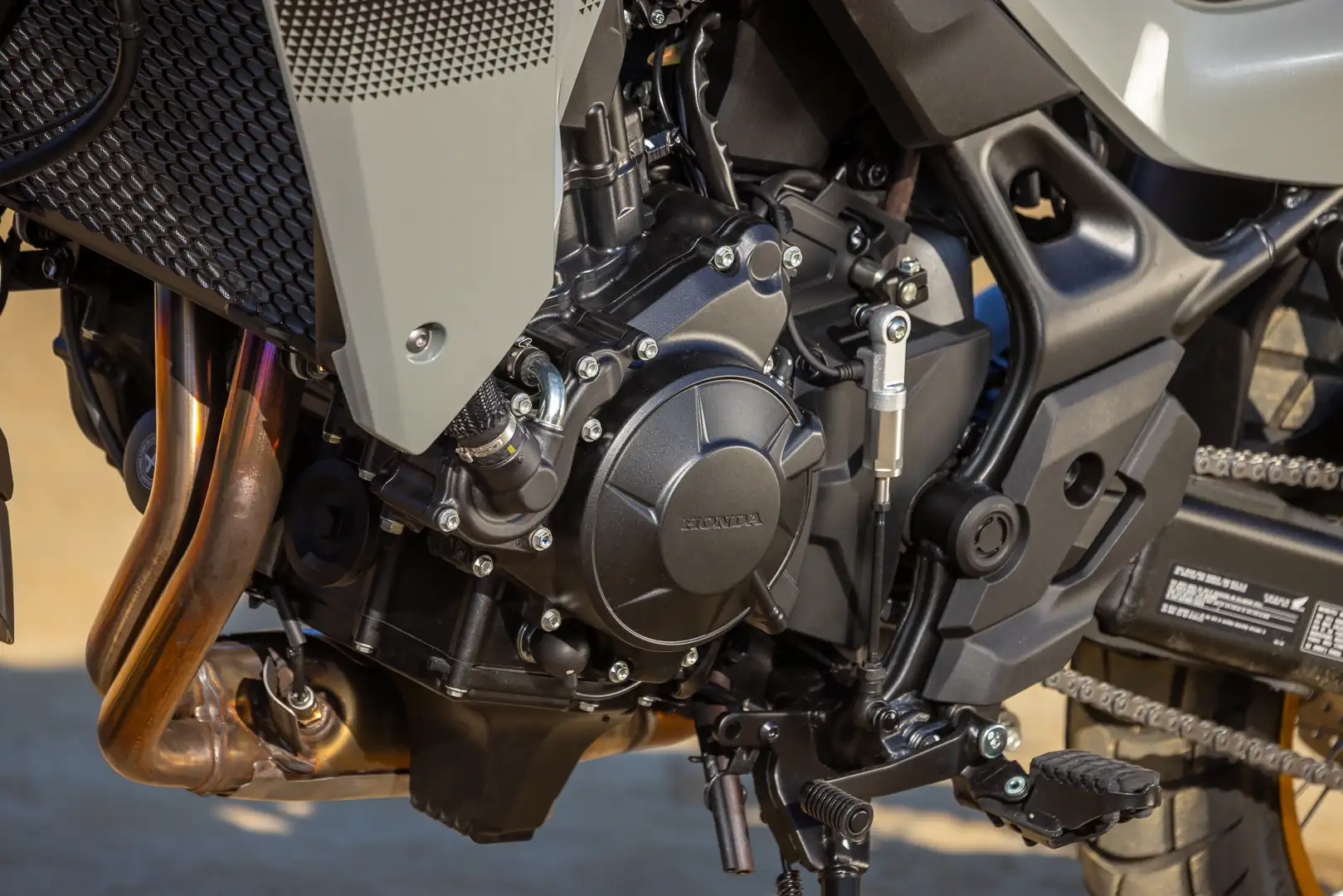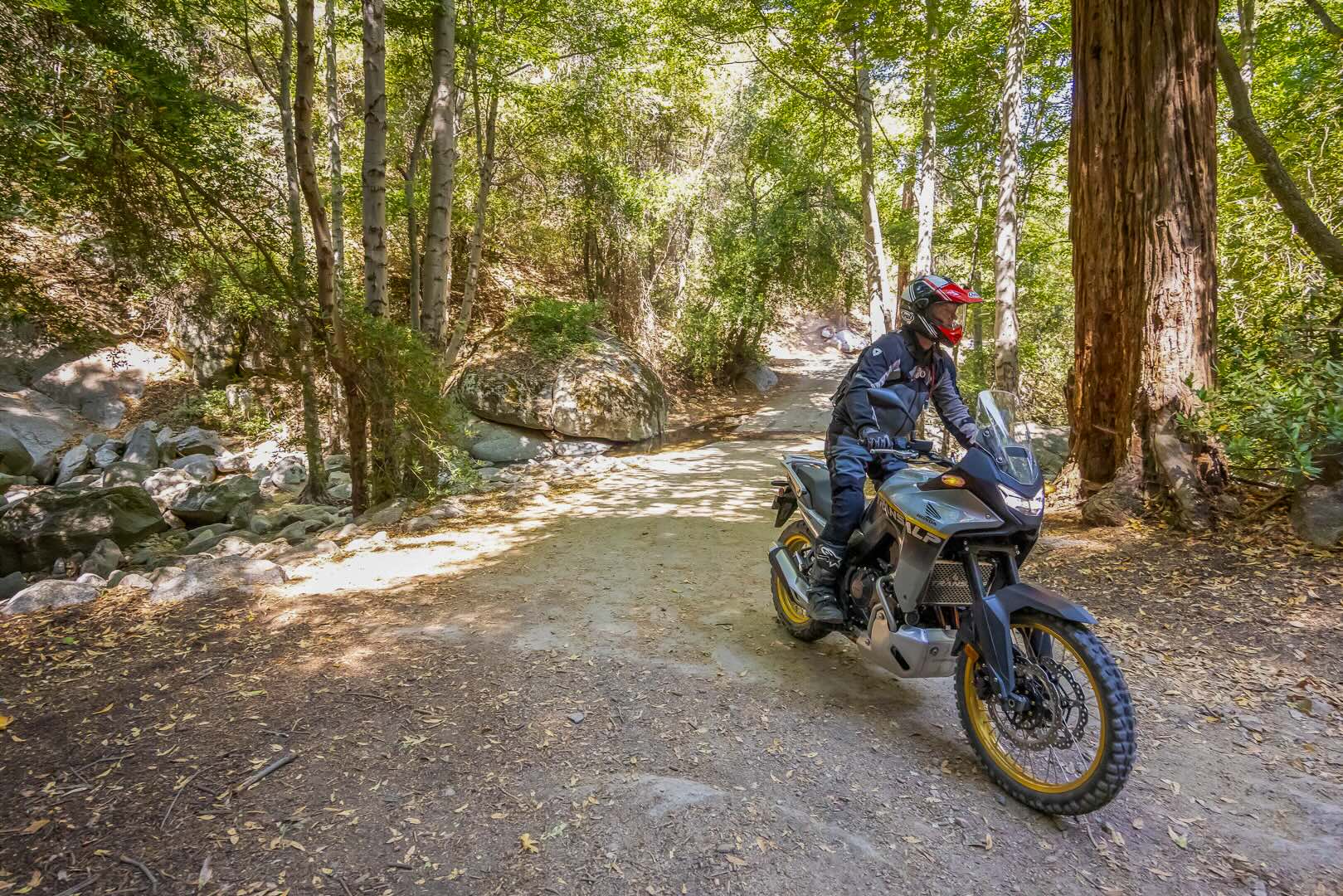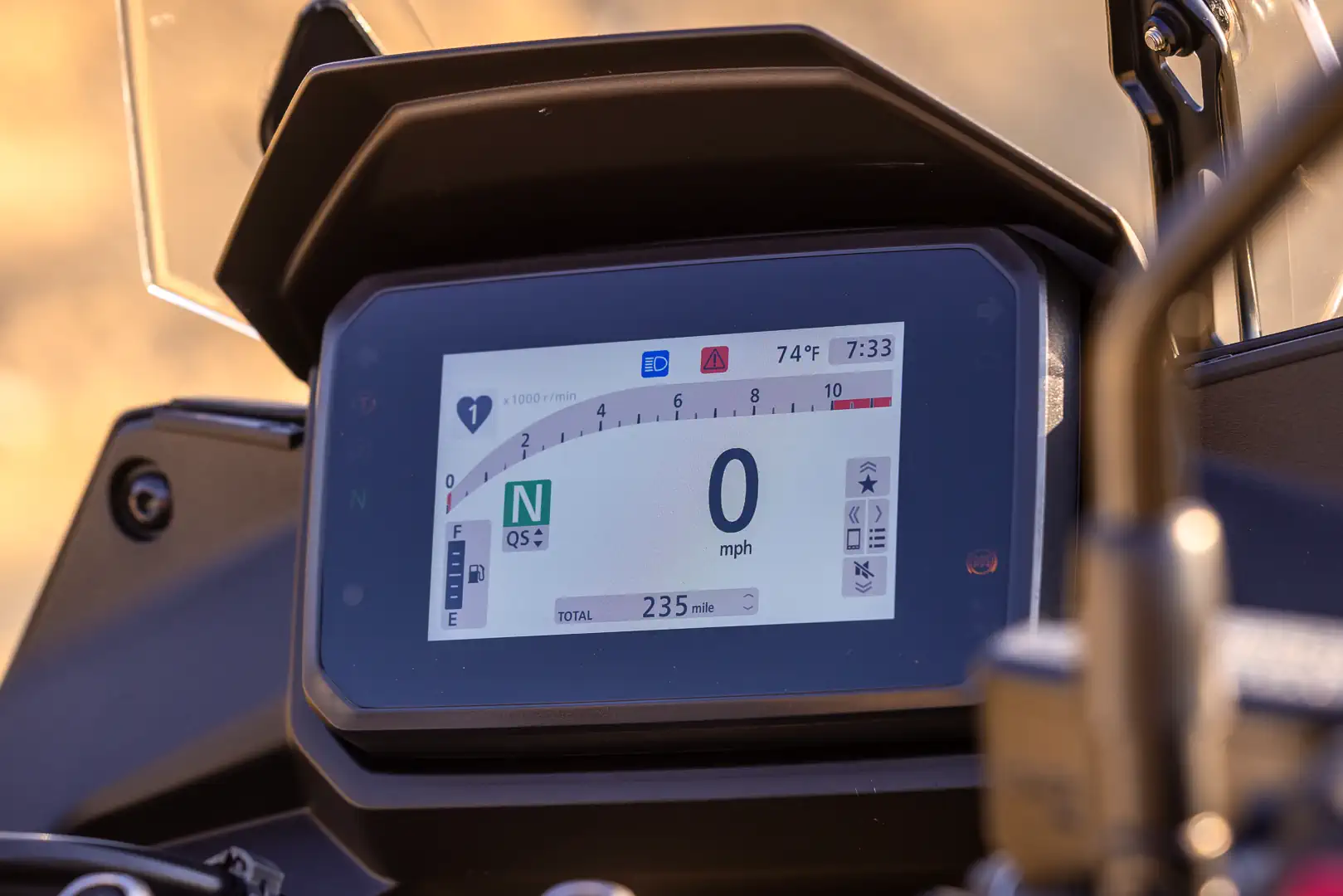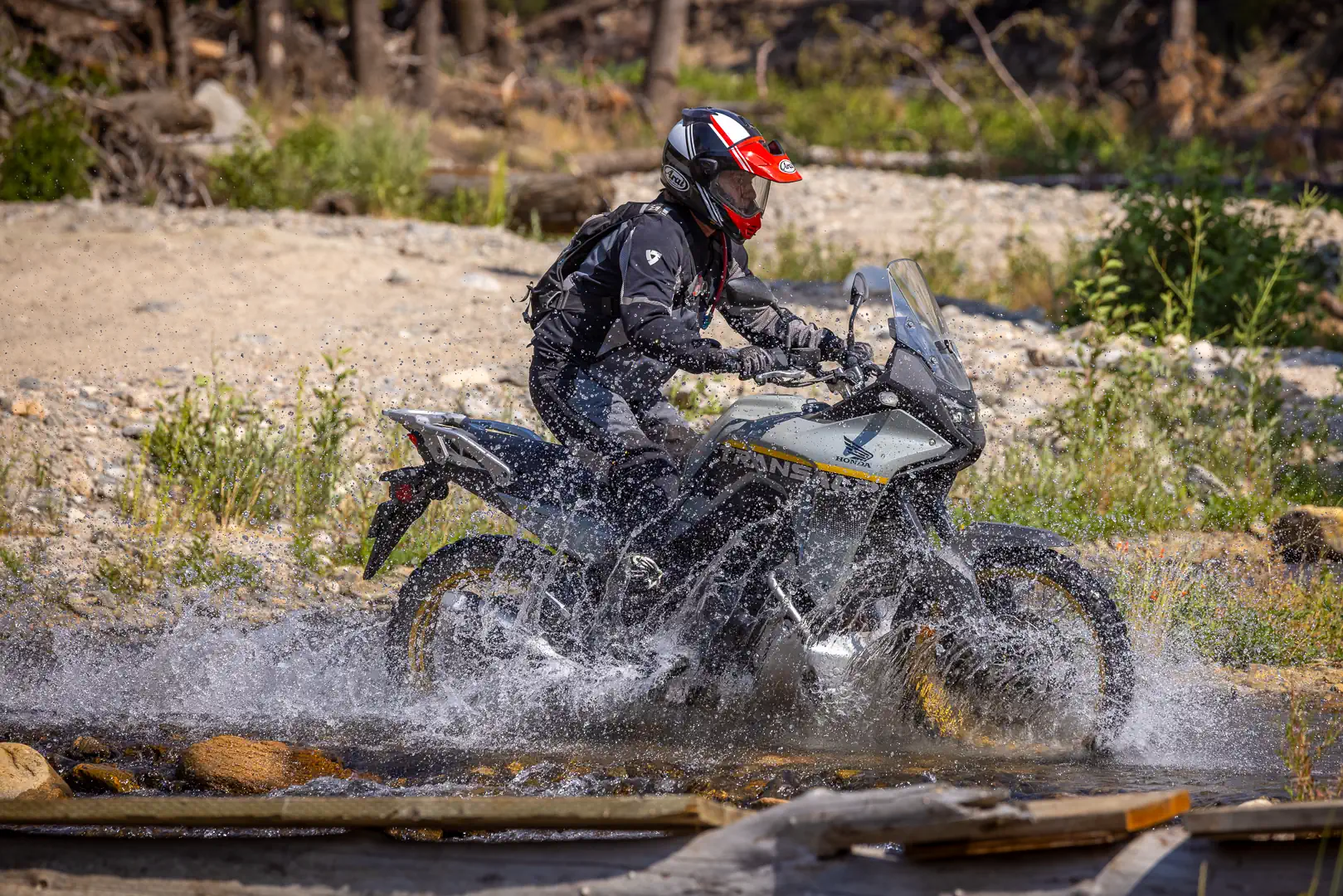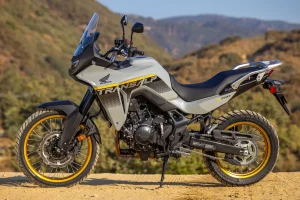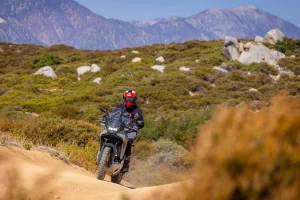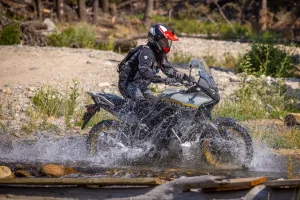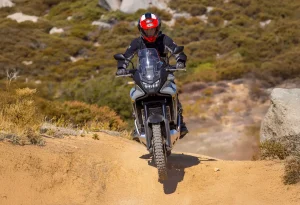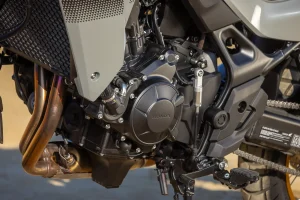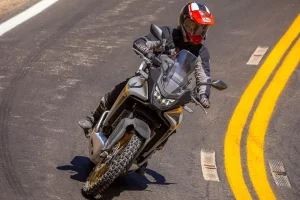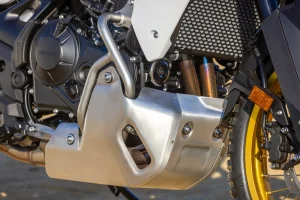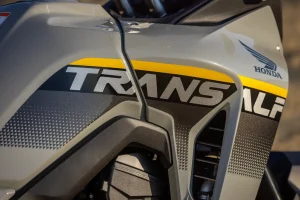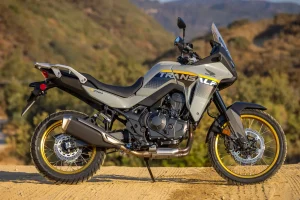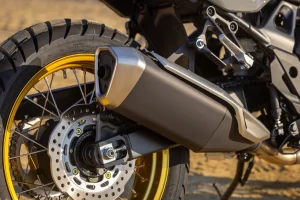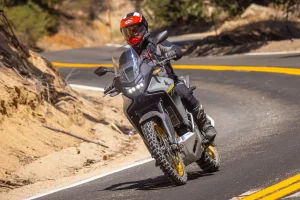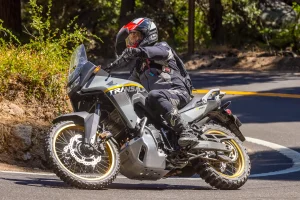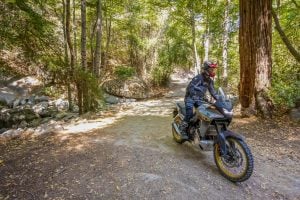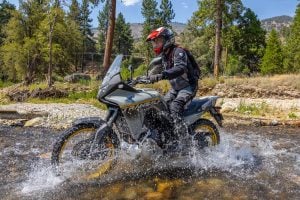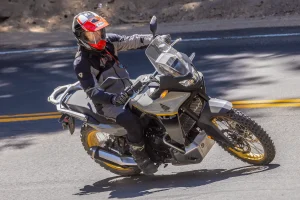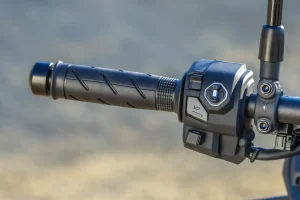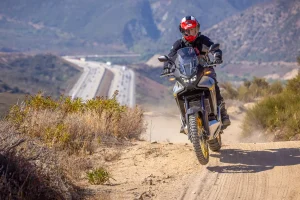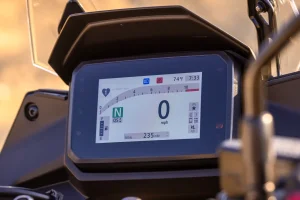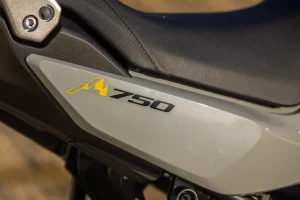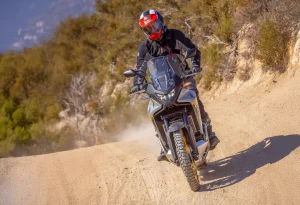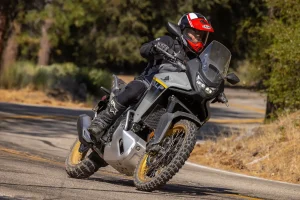The middleweight ADV category has become a battleground, with different makes balancing off-road capability, sporting aspirations, touring comfort, and price points. Honda’s introduction of the Transalp to the U.S. market last year filled a glaring gap in its lineup, slotting neatly between the flagship Africa Twin and the entry-level NX500. The 2025 Honda Transalp XL770 is refined with targeted updates that enhance its solid foundation established last year while keeping the price in four figures.
- The 2025 Honda Transalp immediately appeals to the price-conscious adventure rider looking for a motorcycle with an off-road-ready 21-inch front wheel. At $9999, it is $1000 less than the Yamaha Ténéré 700 and $1710 less than the Suzuki V-Strom 800DE. Price outliers include the Aprilia Tuareg 660 ($12,499), BMW F 900 GS ($14,275), Ducati DesertX ($18,995), and KTM 890 Adventure R ($15,799)—all motorcycles in a different performance and feature category. The Transalp delivers the basics, along with a modest electronics package. There’s nothing wrong with that, as many riders prefer simplicity.
- Honda made targeted updates to the Transalp this year. You can check them out in detail in our First Look story. Quickly, we can tell you that the 2025 Honda Transalp has updated suspension settings, new fairing aerodynamics and headlight, and a new TFT dash with enhanced connectivity. All those improvements cost the customer zero dollars and zero cents—not bad. As our testing was off-road focused, we spooned on a pair of highly-regarded Bridgestone Battlax Adventurecross AX41 tires—impressive rubber for the dirt.
- Hopping on the 2025 Honda Transalp, the excellent ergonomics remain unchanged. At 5-foot-9, I found the Transalp’s ergonomics near-perfect for both street and dirt. The standard 33.7-inch seat height is approachable, making off-road excursions less intimidating. An optional Low Seat ($153) drops it to 32.6 inches for shorter riders, while the additionally padded Comfort Seat raises the seat height to 34.4 inches—the standard height on the Ténéré. The rider triangle—grip, seat, and footpegs—keeps knees at a comfortable angle, minimizing fatigue. Standing off-road, the handlebar bend offers natural control, and the large, grippy footpegs provide a secure platform with the rubber inserts removed.
- Also unchanged is the fantastic 755cc Unicam powerplant. The 270-degree crankshaft mimics the pulse of a V-twin for a characterful exhaust note, and the irregular power pulse delivers character and excellent grip off-road. There are four preset power modes—Sport, Standard, Gravel, and Rain—and two customizable modes. Each mode alters the throttle response, engine braking, traction control, and ABS—all parameters are adjustable in the two User modes. It’s a fairly basic rider aid package, though one that will satisfy most adventure riders.
- In the twisties, you’ll want the Sport mode, and you’ll start to notice suspension changes. The Transalp’s parallel twin is hardly a fire-breather, so even Sport mode has smooth throttle response. The mode reduces the engine braking and traction control, while keeping the ABS at full strength. When taking on the twisties, the motor is superb—it’s also used in the Hornet 750 sportbike. The throttle response is predictable and strong, making life less dramatic in the canyons, though still satisfying.
- The Transalp’s new suspension settings—softer fork, firmer shock—improve the handling incrementally during cornering. While not a sportbike, the Transalp is capable on back roads, especially those with less-than-perfect paving—welcome to California. Honda claims that the new fairing makes the Transalp more agile when cornering, though any effect is too subtle to notice, at least without a back-to-back comparison. As is a recurring theme, the Transalp behaves exactly as expected, even in the canyons with tires that favor the dirt.
- Beyond the twisties, the Transalp excels on open highways. There’s enough power on top for Interstate action. At freeway speeds, the aerodynamic update improves the rider experience, as the center vent and new windscreen shape reduce buffeting. However, the recalibrated suspension is not as plush on the pavement. While far from harsh, you will feel more of the road than you did with last year’s suspension setting. You’ll have no problem touring all day on the Transalp with the standard seat—it’s comfortable. The windscreen is non-adjustable, which is disappointing. A taller screen is available, but we want to be able to change the height depending on conditions—weather or terrain.
- Honda was aiming for a more dirt-oriented Transalp, and it got it. Last time I tested the Transalp, it was in wet and slippery Pennsylvania. This time, it’s the hard-packed, sandy, and powder dirt of the sun-baked San Bernardino National Forest. Honda gives you two ways to take on the dirt—Gravel mode or one of the User modes you assemble. Weighing in at 463 pounds with the 4.4-gallon tank filled, the Transalp feels frisky from the word go.
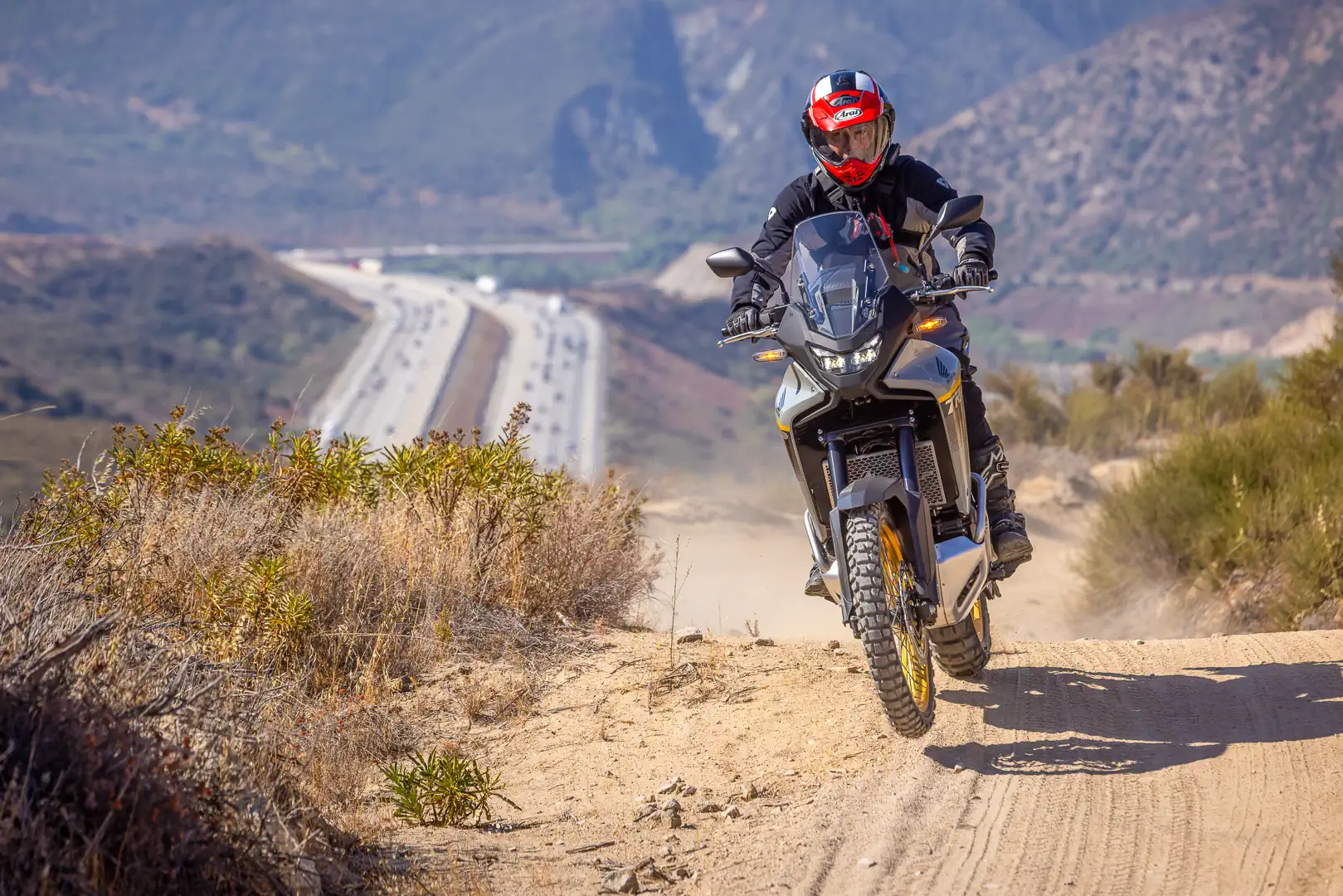
- The Gravel mode’s traction control is magic, at least with Bridgestone Battlax Adventurecross AX41 tires. It allows just the right amount of wheelspin before hooking up and sending you on your way. This means you can be more aggressive with the throttle without wasting the power with unnecessary wheelspin. If you like flinging rocks for fun, Honda lets you turn off traction control and roost to your heart’s content. That is fun, no doubt, though less efficient. The motor delivers manageable power down low, and the traction control only enhances that.
- Honda massaged the Gravel mode’s ABS to make it less intrusive. You can now lock up the rear wheel for short spurts on the 2025 Transalp, which mirrors the traction control’s behavior. Front-wheel ABS is always on, and I have no issues with not being able to lock up the front wheel. If you dip into the User modes, you can disable the rear ABS. I expected to prefer that. However, the calibration in Gravel with the Bridgestones is outstanding. Fortunately, we have a choice, and you can set the Transalp up in a way that works for you.
- The new, still non-adjustable suspension settings are at home in the dirt. The 2025 Honda Transalp feels a bit more composed off-pavement, so you can ride it in the rough stuff with more confidence. It works great on smoother dirt roads, allowing you to tap into the fun the Gravel mode offers. I was faced with a long rock garden masquerading as a road—not one of my favorite situations. This happened to me in Pennsylvania, and the Transalp impressed on the slippery stones. In California, the rocks were more mobile, and the conditions were dusty—quite different. Happily, I had the same success, which reminds me of how capable the Transalp is when the pavement ends. Small jumps and G-outs remind you that the suspension is still on the plush side, with the shock bottoming more often.
- Enhancing both on- and off-road performance is the Transalp’s standard quickshifter and slipper-and-assist clutch. The quickshifter is excellent in the canyons, just nudge it and it changes gears smoothly in either direction. If you need to slip the clutch off-road or you’re doing some urban riding, the assist function is helpful. The slipper function isn’t a huge help for me on the street, as I’m not banging down through the gearbox into corners. It’s a nice little traction enhancement off-road, where you want braking traction whenever you can get it. Honda has three settings for the quickshifter. As on the Hornet, we all prefer the most sensitive setting, as it allows the lowest-effort shifts without any issues of accidentally changing gears. Again, the choice is there for you, should you not find our preferred setting to your liking.

- Just the right braking balance for off-pavement and street was achieved by Honda on the new Transalp. A buttery soft initial engagement is fantastic in the dirt and in lower-speed street conditions. Should you need to slow down in a hurry, the twin 310mm discs are up to the task, despite being paired with traditionally mounted two-piston calipers. The ABS, which is calibrated to each ride mode, contributes to the excellent braking action.
- Honda also offers Standard and Rain modes. The Standard mode comes in handy in city traffic, though you might not even feel the need to swap out of Sport mode. Rain mode pads everything down—it didn’t rain, so it went untested. For my version of the User mode for the street, I used the Sport mode settings with the engine braking increased. I was unable to improve on Gravel mode for my kind of off-road adventuring.
- The 2025 Transalp has Honda’s latest five-inch, day/night TFT display and new matching switchgear. Although it took a little time to get used to the user interface, it’s not as complicated as the Africa Twin, so most anyone should be able to figure it out without taking a class. There’s a dedicated mode button, though mode changes are not instantaneous—be patient. User modes are displayed as a heart with a number inside—that’s not going to age well. Although the display is busy, it is well-thought-out, and you navigate through the menu with a compact four-way toggle switch. If you turn off the key, rear ABS and traction control are reinstated if you had turned them off. The Honda RoadSync smartphone app has all the expected features, including turn-by-turn navigation.
- Honda picked a spot in the marketplace and dropped the Transalp into it. The bike is a budget-friendly option with the features a more casual off-road adventure bike rider will want. The electronics and non-adjustable suspension are set up for riders who like to make some time in the dirt, but are not overly aggressive. The ergonomics are typical Honda—flawless—so you’re comfortable no matter what you’re doing. While the 2025 Honda Transalp XL750 isn’t a shot over the bow of the much more dirt-ready Ténéré, Honda succeeded in improving the Transalp’s dirt prowess while not forgetting that many adventure riders are most at home on the pavement.
Photography by Simon Cudby
RIDING STYLE
- Helmet: Arai XD-5
- Communications: Cardo Packtalk Pro
- Jacket + pants: Rev’It Stratum GTX
- Hydration: USWE Raw 12
- Gloves: Tourmaster Switchback
- Boots: Alpinestars Tech 7 Enduro
2025 Honda Transalp XL750 Specs
ENGINE
- Type: Parallel twin w/ 270-degree crank
- Displacement: 755cc
- Bore x stroke: 87.0 x 63.5mm
- Compression ratio: 11.0:1
- Valvetrain: SOHC; 4vpc
- Transmission: 6-speed w/ quickshifter
- Clutch: Wet multiplate w/ assist and slipper functions
- Final drive: Chain
CHASSIS
- Frame: Steel diamond
- Front suspension; travel: Spring-preload adjustable Showa SFF-CA 43mm inverted fork; 7.9 inches
- Rear suspension: Linkage-assisted, spring-preload adjustable Showa remote-reservoir shock; 7.5 inches
- Wheels: Wire-spoked wheels
- Tires: Metzeler Karoo Street (Bridgestone Battlax Adventurecross AX41, as tested)
- Front tire: 90/90-21
- Rear tire: 150/70-18
- Front brakes: 310mm wave discs w/ 2-piston calipers
- Rear brake: 256mm wave disc w/ single-piston caliper
- ABS: 2-channel (rear wheel defeatable in User mode)
DIMENSIONS and CAPACITIES
- Wheelbase: 61.5 inches
- Rake: 27 degrees
- Trail: 4.4 inches
- Ground clearance: 8.3 inches
- Seat height: 33.7 inches (32.6- and 34.4-inch seats optional)
- Fuel capacity: 4.4 gallons
- Curb weight: 463 pounds
- Colors: White; Deep Pearl Gray
2025 Honda Transalp XL750 Price: $9999 MSRP ($10,749, as tested)


